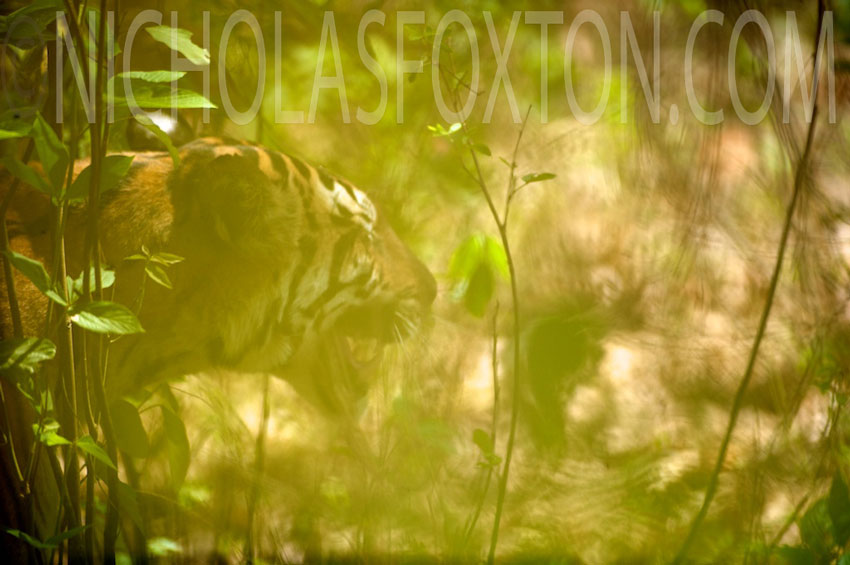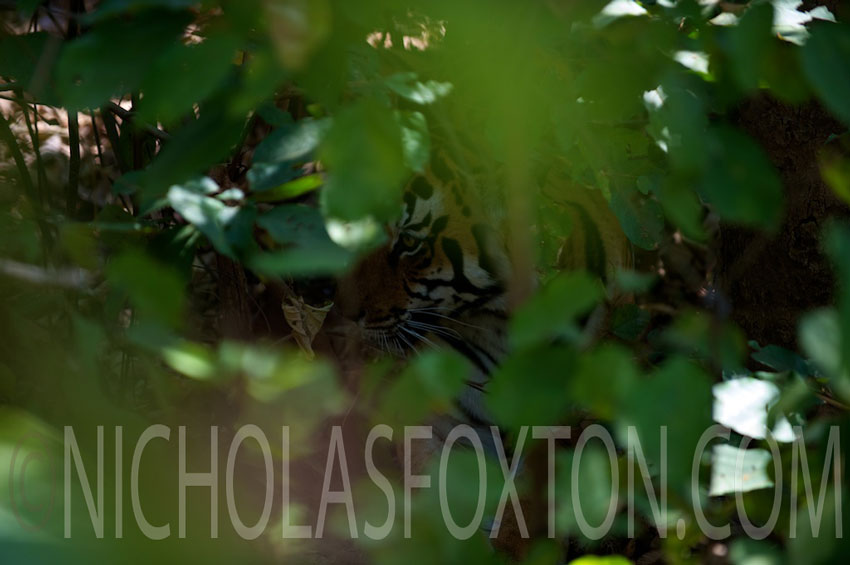It seems that the evolutionary history of the Tiger is as yet not fully understood. It is now classified as Felis Panthera Tigris. That is Genus, Family, Species. The Panthera Family includes the Lion, Tiger, Leopard and Jaguar. The taxonomic status of the Snow Leopard remains problematic, with some recent DNA research suggesting that it is in fact closely related to the Tiger and slightly less closely related to the other members of the Panthera Family (or Roaring cats.) To complicate things further the Snow Leopard doesn’t roar. The Tiger as we know evolved sometime in the Pleistocene (2 million years ago) in Asia. The earliest ancestor is a smaller cat from China but the earliest true tiger (also smaller) is from Java 1.7 million years ago. The evolution of the Tiger is closely related to the emergence and explosive radiation of the Cervid (deer) and Bovidae (cattle) families during the dramatic climatic shifts of the Pleistocene. Both Deer and Cattle did extraordinarily well during the Pleistocene. The ancestral or prototype deer was something like the familiar Muntjac or Barking Deer found throughout Asian forests (and on target to become, as a fertile and exotic introduction, the most populous deer in Britain ! ). The family rapidly expanded and diversified to exploit the emergence of forest-edge and grassland zones – exactly where you find find deer today. In Asia the range of deer body types and size runs from the diminutive muntjac (at around 50cm tall and weighing 10kg) right up to the Sambar at 165cm tall and weighing 450 kg). The Bovidae includes both the true cattle (Gaur, Bison, domestic cattle etc) and some curious oddities like the Nilgai or Bluebull and the Chousingha, which is a four-horned antelope. There is a huge variation in size from the Chousingha (60 cm and 20 kg ) to the Gaur (the largest wild cattle in the world standing 2 metres at the shoulder and weighing 1000 kg. The earliest ancestor of the Bovidae is thought to have been something like the Chousingha in size, shape and behaviour, which is regarded as the most primitive living form. The Tiger evolved to prey on all of them and continues to do so. Their hunting technique is that of an ambush predator, consisting of a ‘concealment, stalk, a sudden rush and despatch of their prey’. The wide range of prey from 20 kg Muntjac to 1000kg Gaur means that a wide range of techniques are used, from frontal assault on smaller prey to attacking from the rear in the case of larger prey. The full sequence of a Tigers hunting is rarely seen but back when baiting of tigers was a regular technique for both hunting and viewing they were observed to approach the unfortunate tethered cow or domestic buffalo as silently and stealthily as possible and then attack from behind and try to bite through the back of the neck. I don’t know of any observations of Tigers hunting the larger prey such as Gaur but it seems likely that this is how they tackle prey that is more than capable of inflicting a serious injury. For a predator an injury can mean an inability to hunt so a degree of caution is prudent. Recent analysis of predator scat at Nagarhole in Karnataka, suggests the selection of prey items is a considered choice. Leopard scat shows very little wild boar remains and tiger scat shows very little langur. Why is this ? I asked various guides here and all of them suggested that the boar is too big and dangerous to be prey for leopard. Boar after all have been known to chase off tiger and there are a handful of cases of one killing a tiger by disembowelling it with their lethal tusks. As for the Tiger/Langur question, opinions were mixed, one suggestion being that ambush predators lash out in anger at the noisy forest sentinel.The most likely explanation is that Langur are too difficult to catch and don’t provide enough nutritional value to be worth it. 
Nicholasfoxton.com
Just another WordPress site

